

| Online: | |
| Visits: | |
| Stories: |

| Story Views | |
| Now: | |
| Last Hour: | |
| Last 24 Hours: | |
| Total: | |
Top 10 Real Life Robot Humans You Won’t Believe Exist (Video)
For centuries, robots have been in the science fiction. However, in this day and age technology has made a great advance in bringing the robots in movies to the real life. Scientists are developing the robots that can interact with users and help them to accomplish some certain tasks. In order to facilitate interactions with human, scientists are focusing on making robots that look and act like humans. Here are some realistic robots today.
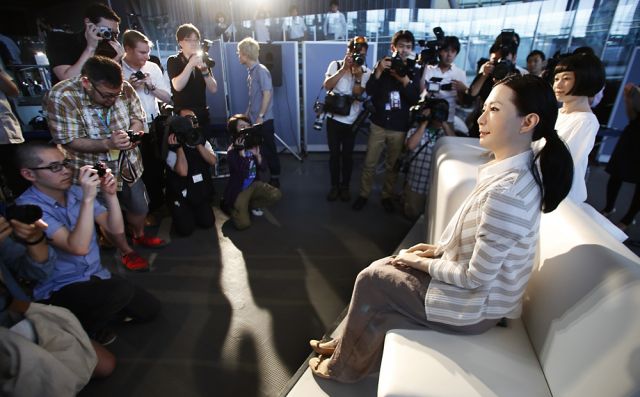
Watch full video:
1. Jules
Jules is one of many robots designed by Hanson and his team at Hanson Robotics. It is made using a lightweight material called “Frubber”. The material allows Hanson’s robots to flash that bizarre corner-of-the-mouth smile with at least some semblance of realism.
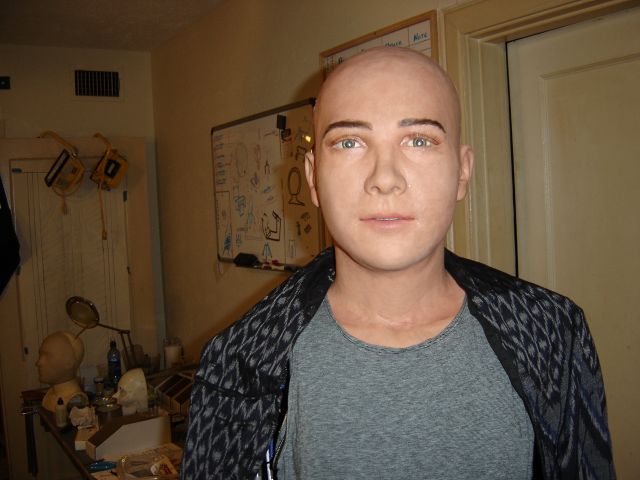
Jules is an amazingly life like robot, with a combination of interesting features. You can have a natural, interactive conversation with Jules. Jules also uses computer vision, including face tracking and face recognition, to simulate complete verbal and nonverbal interaction, such as maintaining eye contact and turning to follow fellow conversationalists. Jules can remember people as well. Hanson robotics has even said, “if you treat Jules poorly, he may not be nice to you”.
The primary short-term use for artificial intelligence like Jules remains theme park animatronics. However, Hanson believes that in the longer term, his lifelike androids might work in hospitals and alongside special-needs children.
Jules was commissioned for the University of West England and designed to have what Hanson called a “statistically perfect androgynous face.”
2. Geminoid D K
Hiroshi Ishiguro is the director of the intelligent robotics laboratory at Osaka University in Japan. With a degree in engineering, he has been responsible for some of the most realistic robots to date, including the Telenoid, Elfnoid, Erica, Otonaroid, Kodomoroid, the Geminoid HI-2, which looks like him, Geminoid HI-4 and Gemenod F.

While the HI models couldn’t pass as completely human, the DK, which was modelled after professor Henrik Scharfe of the University of Denmark, could easily be mistaken for a real person.
The Geminoid DK is the first of Ishiguro’s robots that has facial hair and does not resemble a Japanese person.
While it does not possess artificial intelligence, its movements are controlled via motion capture and its movements and facial expressions are very realistic.
3. Mark 1
Forty-two-year-old product and graphic designer, Ricky Ma of Hong Kong, spent two years and $50,000 to re-create his favorite Hollywood star, Scarlett Johansson.
Teaching himself about programing and electro-mechanics, he created the Mark 1. Mark 1 features a 3D printed skeleton, and 70% of the body was made using 3D printing. Her skin is made from silicone, which wraps around and hides the mechanical and electronic interior of the robot to give her a human-like appearance.
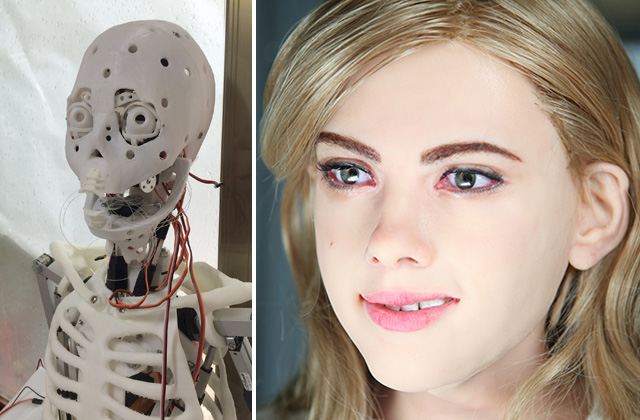
The robot also features facial motors that enable her eyebrows and the “muscles” around her eyes to move, relax and tense. When spoken to, Mark 1 can react by moving motors to produce a convincing facial expression, such as raising her eyebrows in surprise and even winking.
This lifelike fembot can move its arms and legs, turn its head, bow, change its facial expressions and speak.
It is programmed to respond to pre-programmed verbal commands, so no artificial intelligence has been implemented.Ma says the process of creating the Mark 1 was mostly trial and error, and a childhood dream come true.
4. Actroid
Actroid F, the five-and-a-half-foot tall machine looks like a human being and is so life-like that it fooled one-in-two people into thinking it was a real human.
Modelled after a young Japanese woman, and manufactured by Kokoro company LTD. for the 2003 international robot exhibition in Tokyo, Japan, the robot can blink, respond to eye contact and recognise body language.
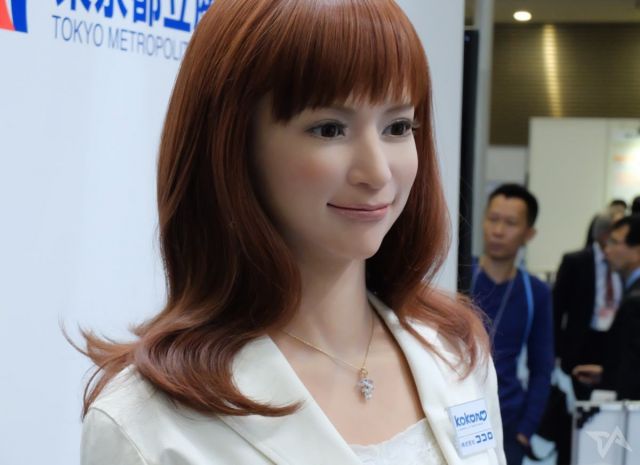
It could imitate human functions, such as the appearance of breathing, blinking and facing the person addressing it.
It is equipped with artificial intelligence and while it has limited movement of its legs, its upper body can react quickly to stimuli.
It was originally created to act as a receptionist or help desk assistant, designed to answer simple questions and directions.
But not only has the lifelike device been mistaken for a real person – she’s also been deemed ‘sexy’ by those who have seen her.
5. Simroid
Kokoro Company Ltd., the creators of Simrod, claim that the humanoid bot is a next-generation dental patient simulator. It has been developed to provide more emotional feedback to dentists in training.
But the way I see it, it’s just another way robots are preparing us for their eventual takeover.
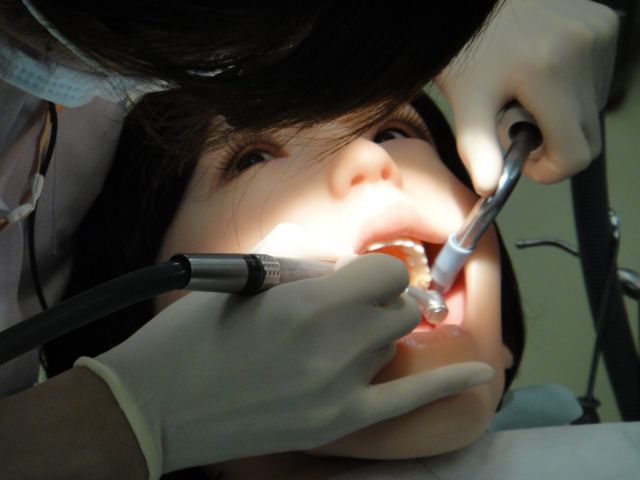
Simroid is loaded with sensors that give feedback to dentistry students. It can express pain when poked hard; it grimaces to show pain; and it also moves its hands and eyes to say that it is hurt.
It can respond to basic commands, like “open your mouth wider”. Over the years, they have added to the Simroid, giving it a full body and the ability to speak in Japanese and English.
6. Kodomoroid & Otonaroid
Named Kodomoroid and Otonaroid, the creepy-looking robots speak so smoothly they are eerily lifelike. Japanese robotics expert Hiroshi Ishiguro, an Osaka University professor, said they will be useful for research on how people interact with robots.
The purpose of the humanoids, which were unveiled at the start of a major new permanent exhibition showcasing cutting-edge robotics, was to encourage interaction between humans and robots and explore what differentiates the two.

Kodomoroid resembles a teenage girl, and Otonaroid resembles a grown woman.
The pair offer information to museum goers, answering their questions, and offering directions. Kodomoroid can even perform tongue-twisters.
They also have distinct personalities.
Kodomoroid is more easy going and ‘confident’ in its speech patterns, whereas Otonaroid is more ‘nervous’.
These human characteristics are meant to be comforting to people interacting with them.
7. Sophia
Sophia is another humanoid robot created by Hanson robotics.
Although the back of Sofia’s head is missing, from the front the robot looks creepily lifelike.
It has 62 different facial and neck mechanisms to create natural-looking movement as well as a patented silicon skin.
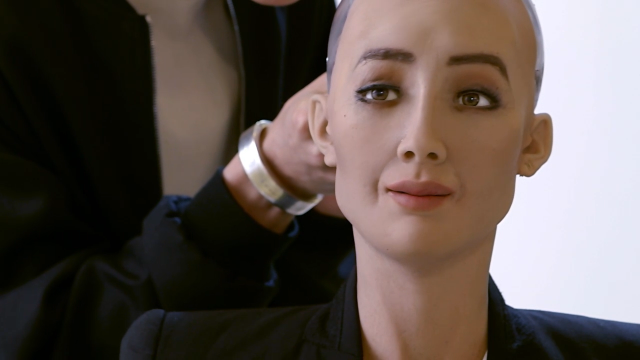
Inside its eyes are cameras that are capable of facial recognition – meaning it can look you in the eye when it threatens to destroy your species. It can recognize non-verbal cues during conversations.
Hanson Robotics has developed a “Character Engine AI” that will help Sophia develop a personality. In the future, David Hanson believes that expressive robots will be able to form strong emotional connections with humans.
But the idea of robots enslaving or destroying humans is not a new one and many experts are quick to warn of the dangers of artificial intelligence.
There are more motors in her face than earlier models, allowing for more realistic movement and facial expressions.
David Hanson Junior believes that androids like Sophia could be in use within the next twenty years.
Source: TopAmazing Channel


